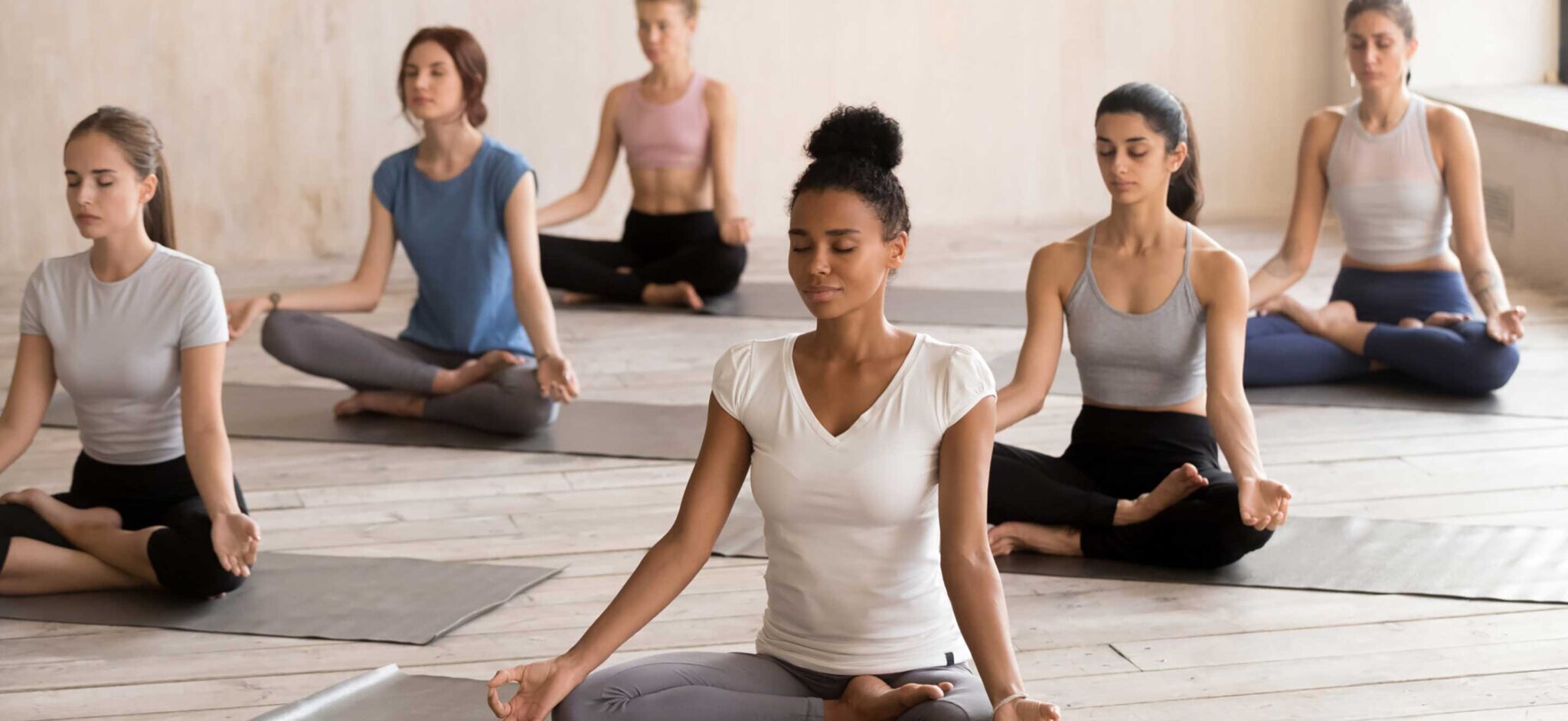Do you ever feel overwhelmed by the sheer number of yoga options? According to Harvard Health Publishing, there are over 800 different types of yoga, making it challenging to know where to start. Understanding these distinct styles is crucial for finding the perfect practice to enhance physical and mental well-being.
In this guide, we’ll explore the major styles of yoga, highlighting their unique characteristics, benefits, and how to get started. Whether you’re a seasoned practitioner looking to broaden your horizons or a newcomer seeking the right entry point, this guide will empower you to discover the transformative power of yoga.
Simplify your studio’s management and class offerings with Yoga Studio Software, designed to help you run every type of yoga class efficiently.
Major Styles of Yoga: A Breakdown
Let’s dive into some of the most popular and widely practiced styles of yoga:
- Hatha: “Hatha” is a broad term encompassing many physical yoga practices. It’s a great starting point for beginners, focusing on basic postures (asanas), breathing techniques (pranayama), and yogic principles at a slower pace.
- Vinyasa: Vinyasa emphasizes flowing seamlessly between postures and synchronizing movement with breath. Classes range from gentle and meditative to fast-paced and physically demanding.
- Iyengar: This style prioritizes precise alignment in postures. Iyengar often utilizes props like blocks, straps, and blankets to support students in achieving correct posture and tailor poses to individual needs.
- Kundalini: This practice focuses on awakening inner energy through dynamic movement, breathing techniques (pranayama), chanting, and meditation.
- Ashtanga: Ashtanga follows a sequence of physically demanding postures with a strong focus on the breath. It builds strength, flexibility, and focus.
- Bikram (Hot Yoga): Bikram consists of a fixed sequence of 26 postures in a room heated to around 105°F (40°C). The heat promotes flexibility and detoxification.
- Yin: This slow-paced style focuses on long-held, passive poses targeting the deep connective tissues like fascia. Yin offers a meditative practice that promotes flexibility and introspection.
- Restorative: Restorative yoga utilizes props like bolsters, blankets, and blocks to support the body in gentle poses. This deeply relaxing style is ideal for stress relief, deep relaxation, and healing.
- Prenatal: Prenatal yoga classes are tailored for pregnant women. They use modified postures and breathing techniques to accommodate changing bodies. Prenatal yoga promotes physical comfort, emotional well-being, and prepares women for childbirth.
- Anusara: Anusara aligns movement with principles based on celebrating the heart and connecting to a higher power. It combines precise alignment with a flowing and playful quality.
- Jivamukti: This vigorous style weaves chanting, meditation, breathwork, and alignment-focused asana practice. Jivamukti incorporates yogic philosophy and ethical teachings for holistic personal development.
How to Practice Each Style
Now that you understand the major yoga styles let’s explore how to get started with each one:
Hatha: Seek out beginner-friendly Hatha classes that emphasize the fundamentals. These classes will provide clear instructions for common postures (asanas), introduce you to yogic breathing techniques (pranayama) and offer a gentle introduction to the philosophy behind yoga.
Vinyasa: Choose a Vinyasa class that aligns with your experience level. Options like “Slow Flow” or “Beginner Vinyasa” offer a less intense entry point. If you’re looking for a challenge, “Power Vinyasa” classes provide a more vigorous workout with faster-paced transitions.
Iyengar: Look for certified Iyengar instructors who have undergone rigorous training. They will guide you meticulously through proper alignment and help you modify postures with props like blocks, straps, and blankets. Iyengar studios often offer specialized classes focusing on specific needs (e.g., back care, therapeutics).
Kundalini: Find Kundalini classes or workshops both in yoga studios and online. Familiarize yourself with the concept of “kriyas”– sets of movements, breathwork, and sometimes chanting that are repeated for a specific effect. These classes offer a unique blend of physicality and spiritual exploration.
Ashtanga: While Ashtanga can be practiced independently, it is recommended that you start with instructor-led classes. Mysore-style classes offer personalized attention within a structured sequence. Experienced Ashtanga teachers can help you safely build strength and flexibility for this demanding style.
Bikram (Hot Yoga): Seek out dedicated Bikram studios that offer classes in a heated room. Hydrate well before, during, and after class. Bring extra water, a sweat towel, and wear light clothing that allows for movement. Expect a challenging and detoxifying practice.
Yin: Find Yin yoga classes that focus on relaxation and passive poses held for several minutes. Prepare to use props liberally – blocks, bolsters, and blankets will support your body and enhance comfort. Yin is a deeply introspective practice, that allows for release of tension in the connective tissues.
Restorative: Look for Restorative yoga classes, as instructors are trained in creating a nurturing environment. Studios provide all the necessary props to fully support your body in deeply relaxing postures, promoting a sense of release and well-being.
Prenatal: Seek classes designed for pregnancy taught by certified prenatal yoga instructors. These classes prioritize safe modifications, support your changing body, and help you connect with your breath and your baby.
Anusara: Find Anusara classes that resonate with your values and goals. Look for classes emphasizing “Universal Principles of Alignment” and heart-opening themes. Expect a flowing practice that blends precise alignment with a spirit of playfulness and devotion.
Jivamukti: Explore Jivamukti classes to experience an invigorating and holistic practice. Prepare for physically challenging sequences interwoven with yogic philosophy, chanting, meditation and ethical teachings.
Benefits of Yoga
Regardless of the style you choose, practicing yoga consistently can provide a remarkable range of physical, mental, and emotional benefits. Here’s a closer look:
Improved Flexibility & Joint Health:
Yoga postures (asanas) gently stretch muscles and connective tissues, increasing your range of motion. This can alleviate stiffness, prevent injuries, and improve overall joint health, especially as you age.
Enhanced Strength & Muscle Tone:
While not traditionally viewed as “strength training,” yoga effectively builds muscle strength and endurance throughout your body. Poses engage muscles you might not typically target, especially your core, leading to improved functional strength for everyday life.
Better Posture & Body Awareness:
Yoga encourages mindfulness of your body’s alignment in everyday life. Over time, it helps you correct imbalances, improve posture, reduce pain associated with poor posture, and enhance your overall appearance and confidence.
Reduced Stress and Anxiety:
Yoga’s combination of focused movement, breathwork (pranayama), and meditation techniques calms the nervous system and induces a relaxation response. Consistent practice can help manage stress, reduce anxiety, and bring about a sense of peace in a hectic lifestyle.
Improved Mental Clarity & Focus:
By cultivating present-moment awareness, yoga helps quiet the minds constant chatter, leading to greater focus, mental clarity, and decision-making abilities.
Boosted Mood & Emotional Wellness:
Studies suggest that yoga can decrease symptoms of depression, reduce feelings of negativity, and enhance overall mood and well-being. It offers a sense of empowerment and tools to cope with life’s challenges.
Pain Management & Injury Recovery:
Yoga can effectively manage chronic pain conditions like arthritis and lower back pain by reducing inflammation, improving mobility, and promoting relaxation. It can also be incorporated into rehabilitation programs to help people recover from injuries faster.
Improved Sleep Quality & Energy Levels:
Practicing yoga, especially gentle styles like Restorative or Yin, can help you unwind before bed, leading to better and more restful sleep. Yoga may also increase energy levels throughout the day by calming the mind and improving overall health.
Enhanced Cardiovascular Health:
Some yoga styles can be quite aerobic, improving circulation and benefiting heart health. Yoga’s potential to reduce stress also indirectly supports cardiovascular well-being.
Frequently Asked Questions (FAQs)
While they often overlap, yoga emphasizes physical postures (asanas), breathwork and meditation. Meditation focuses primarily on stilling the mind through various techniques like mindful breathing, mantras, or guided visualization. Many yoga classes incorporate periods of meditation.
Definitely! Yoga is NOT about how flexible you are. It’s about meeting your body where it’s at and gradually improving over time. Props and modifications make poses accessible for all levels. Focus on the journey, not just the destination.
It can be, but it’s crucial to consult your doctor and inform your yoga instructor about any limitations. Some forms of yoga, like Iyengar or Restorative, excel at adapting poses for individual needs.
Yes, difficulty levels vary greatly. Vinyasa, Ashtanga, and Power Yoga can be physically demanding. Hatha, Yin, and Restorative are generally gentler. Check class descriptions and seek out beginner-friendly options.
As with any exercise, there’s a risk of injury, especially if you push beyond your limits. Start slowly, listen to your body, and choose a qualified instructor emphasizing safe practices.
Comparing the Styles
With so many styles to choose from, how do you decide which one is right for you? Here’s a helpful way to think about it:
Your Goals:
- Relaxation and Stress Reduction? Try Restorative, Yin, or gentle Hatha
- Strength Building? Consider Vinyasa, Power Yoga, or Ashtanga
- Improve Flexibility? Explore Yin, Hatha or Vinyasa
- Injury recovery or specific needs? Iyengar might be an excellent fit
- Spiritual Exploration? Kundalini or Jivamukti could be intriguing
Your Personality:
- Prefer structure and detail? Iyengar or Ashtanga may appeal to you
- Enjoy a flowing, creative practice? Vinyasa might be your style
- Crave deep relaxation? Seek out Restorative or Yin classes
Your Experience Level:
- Beginner? Start with Hatha or beginner-level Vinyasa classes
- Experienced Athlete? Explore challenging styles like Ashtanga or Power Yoga
- Pregnant? Look for certified prenatal yoga instructors
Remember: There’s no single “right” answer. The best way to find your perfect yoga style is to experiment! Try different classes and instructors until you find a practice that nourishes your body, mind, and spirit.
Final Thoughts
Yoga provides a diverse landscape of practices to suit everyone’s needs. Whether you prioritize physical challenge, gentle restoration, or a blend of movement and mindfulness, there’s a perfect yoga style waiting for you. By understanding the core characteristics of popular styles, you’ll be empowered to confidently embark on your yoga journey.
Ready to Explore Further?
Dive deeper into the fascinating world of yoga with these resources from our blog.
Understanding the Nuances
- Yoga vs. Meditation – What’s the Difference?: Uncover how these practices complement each other.
Tech-Enhanced Yoga
- Yoga Tech in 2024 – Top 5 Devices for Ultimate Mind-Body Wellness: Discover how technology can take your practice to the next level.
The Future of Yoga
- 7 Yoga Trends Predicted to Shape 2024: Get a glimpse of exciting developments in the yoga world.

by Julie Sippy Senior Marketing Manager, Brand & Community
-
First published: April 17 2024
Written by: Julie Sippy
